
Sherlock Holmes
He's been called the greatest detective that never was. The tales of Mr. Sherlock Holmes have changed detective stories forever. On a personal note, I'm a big fan of these stories.

It's time to go grab your magnifying glass and look for clues into this famous gumshoe – who never was.
From whence came a great detective
The man who gave us Mr. Holmes was a doctor named Sir Arthur Conan Doyle.

Doyle in 1914.
Unimpressed with the detective stories of the day, he decided to create a better one. His hero would be totally logical, a "thinking machine," as was described in one of the stories. This new detective would be a man who constantly used the scientific method – a scientific man modeling the scientific thinking of the modern age.
So, in November of 1887, Sherlock was introduced to the world in the story A Study in Scarlet.
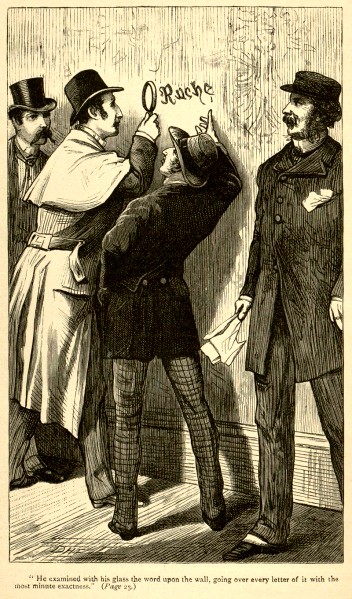
Illustration from A Study in Scarlet, Holmes holds the magnifying glass while John Watson stands to the left.
The man himself
Part of the inspiration for Holmes came from a professor of Doyle's. Doyle was impressed by how he could observe details and make impressive deductions. Surely, if a real-life person could do so, a fictitious person could make truly amazing deductions. And so Sherlock did. Like some magician, he constantly pulled correct conclusions seemingly out of thin air.
Consider the example of The Adventure of the Blue Carbuncle.
With no more than a lone hat, he figured out that the man who wore it ...
… was highly intelligent.
… had been reasonably well-to-do but had fallen into hard times within the last three years.
… had not had gas installed in his house for lighting or cooking.
… probably was drinking too much, and his wife did not love him anymore.
In The Greek Interpreter, Holmes partially credits his abilities to his mother and her artistic interests. In this same story, we are introduced to Holme's older brother, Mycroft – who Holmes says is even better at making deductions than he. But, whereas Sherlock used his talents to good use, his brother used it just as an amusement.
We also learn Sherlock developed his skills while at college and even helped a school friend with a case. Afterward, the friend's father suggested he become a detective.
The rest is history.
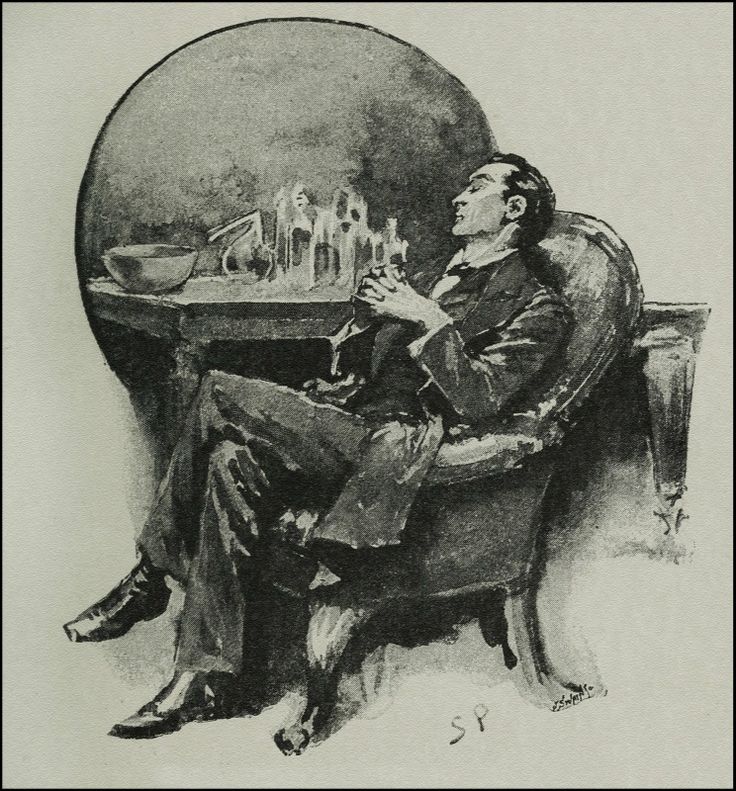
In the end, he would retire, move to the country, and raise bees.
Fashion statement
Think about what Mr. Holmes looks like, or look up classic images of him, and you'll see a man wearing a deerstalker cap, an inverness cape, a curved pipe in his mouth, and a magnifying glass.

Holmes statue, London England.
True, he did use a magnifying glass to pick up clues. He also did smoke at times, but not the curved pipe he's famous for.
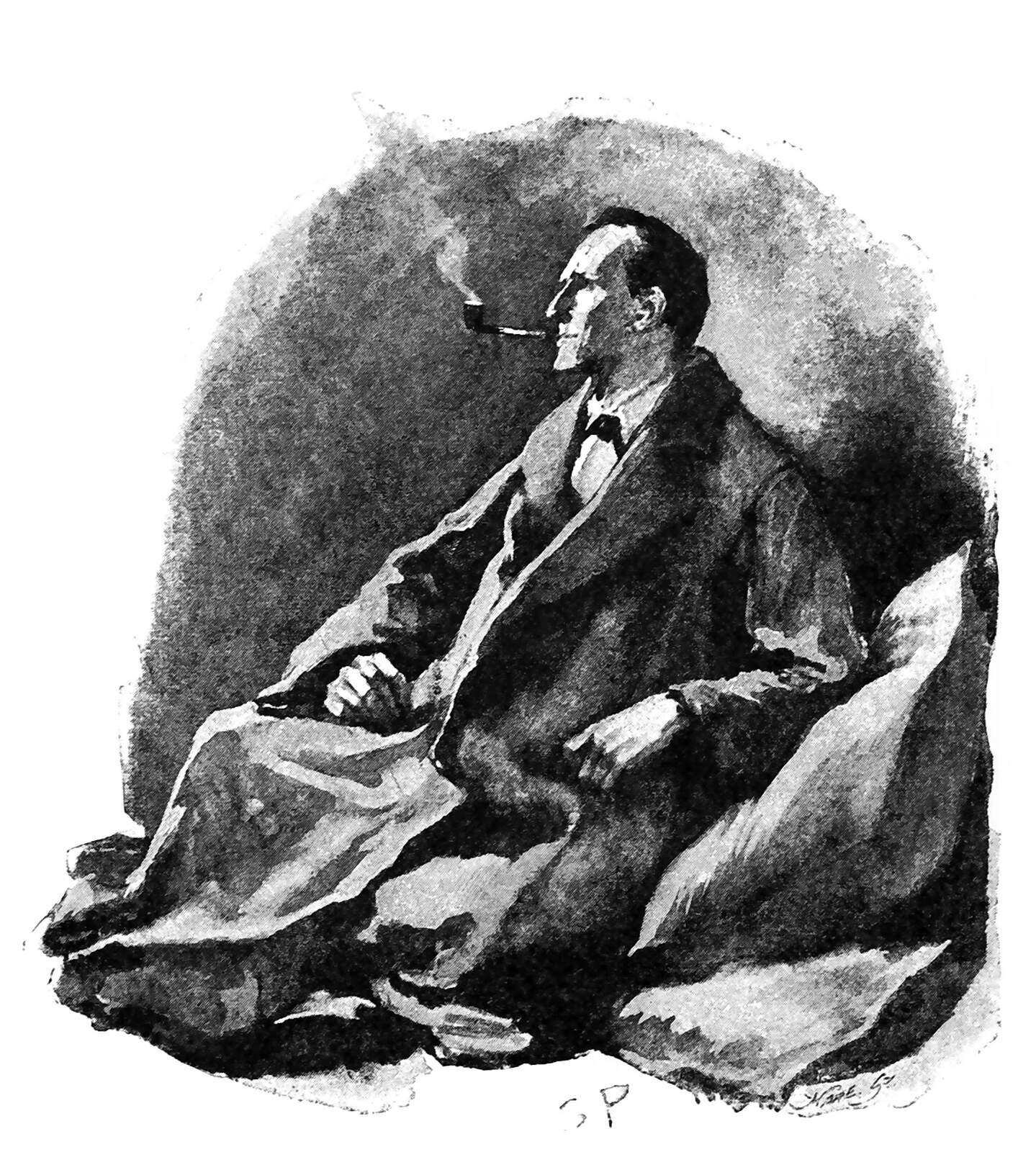
The rest of his well-known outfit only showed up when he was investigating out of doors, such as in The Hound of the Baskervilles. Somehow, the whole package became part of what Sherlock was.
A true friend
Throughout the stories, Sherlock's good friend and roommate is Dr. John H. Watson (known as Mr. Watson, Dr. Watson, or simply just Watson).

Of his background, we know Dr. Watson was a doctor who served in the British Army stationed in India and Afghanistan, returning to England wounded. He became roommates with Holmes when he heard through a friend he was looking for someone to share the rent with.
Later in the series, Watson would marry and live in a different place for a time.
Watson goes with Holmes on his adventures and, with few exceptions, does the narrating. From time to time, Holmes expresses his disapproval of Watson's style, saying that he did not do justice to the logical process of solving the case.
The good, the bad, and the unexplained
Of course, someone with a job like Holmes will have their enemies – but with the police? OK, Holmes was never enemies with the police, but they didn't overly like each other either. Sherlock was critical of the police and their methods, and the police often thought little of him – until they worked with him and had to admit his genius.

“I've heard of your methods before now, Mr. Holmes.” Illustration from The Adventure of the Naval Treaty.
His most famous enemy was Professor James Moriarty, a professor of mathematics who turned his logical training into becoming a criminal mastermind. We are introduced to him by Holmes, who explained to Watson that he had concluded that someone was behind the scenes of a series of crimes.

In Holmesian stories, Moriarty has been expanded to be the big arch-enemy of Sherlock. In one such tale, Holmes knew the evil professor as a boy. In truth, the big bad guy only appeared in the two-part story when Sherlock died.
Holmes died?
Yes – sort of.
Mr. Doyle decided he wanted to move on from writing about Holmes and decided to kill him off. In The Final Problem, the evil professor goes after him, burns his apartment, and forces him to flee, with Watson following him, to Europe. In the final scene, Watson sees the two men fighting near a waterfall before both fall to their apparent deaths.
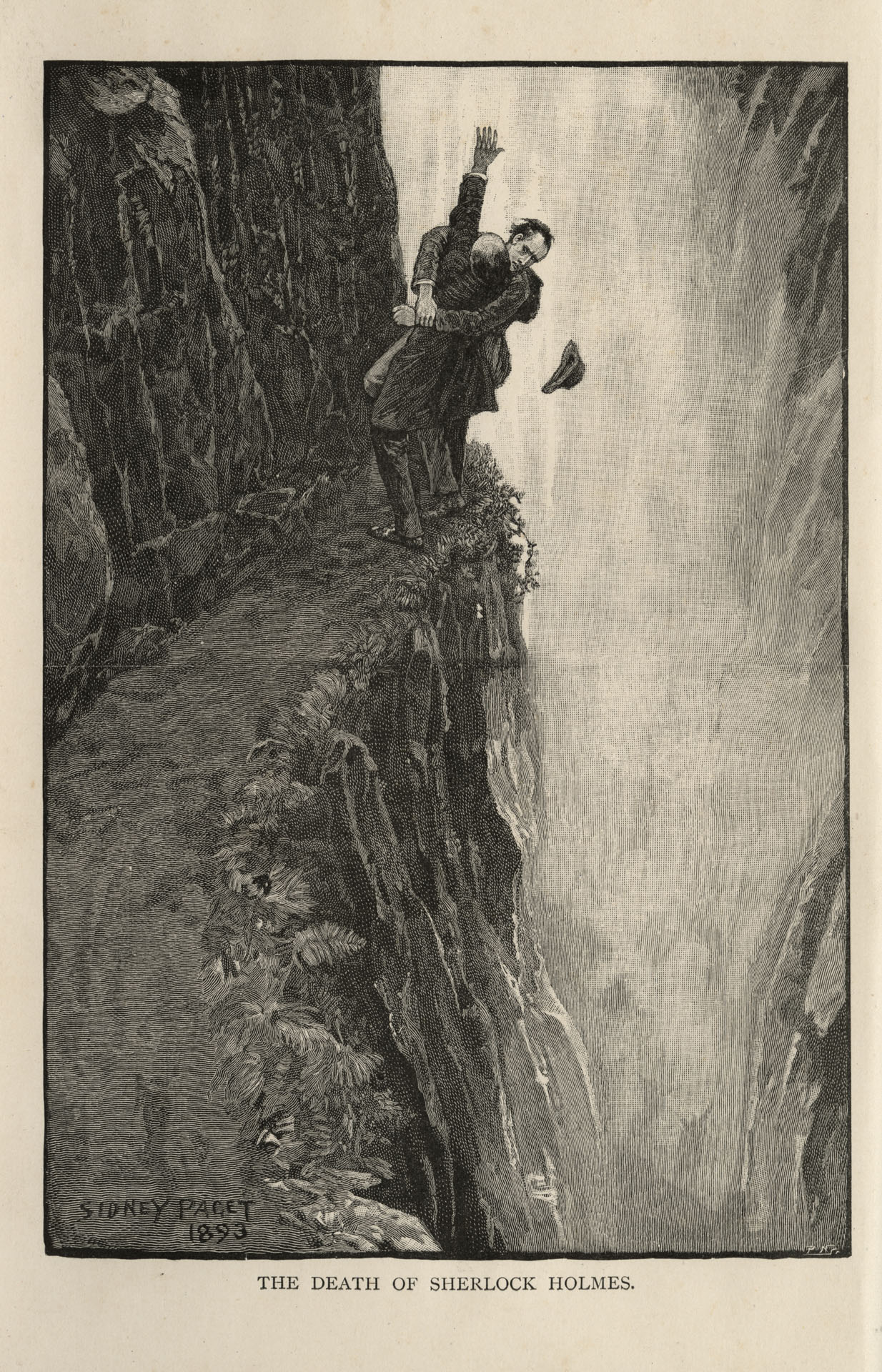
People were upset, so Doyle brought the detective back in a series called The Return of Sherlock Holmes. In this story, it turned out Holmes was not killed, but survived the fall down the falls. However, a mysterious man was still after him, so he couldn't make himself known to Watson at that time. Years later, he was able to be reunited with his old friend, and the threat was eliminated.
The logical flow of the story was lost as they picked up where they had left off. So, there they were, back in the old apartment (even though it had been burned and destroyed) together (even though Watson had married and was living elsewhere). In every way, it was back to business as usual.
A sampling
Here is a sampling of some of the stories of the famous sleuth:
A Scandal in Bohemia. It's not one of my favorites, but notable as the one story where Sherlock is fooled. Here, Holmes is visited by one Wilhelm Gottsreich Sigismond von Ormstein – the future king of Bohemia. There is a photo of him with a woman, and he fears it can be used for blackmail. So he wanted Holmes to retrieve it. She would end up getting the better of him, and Holmes would ever hold her in high honor after that.
The Adventure of the Blue Carbuncle. It's Christmas time, and a police officer drops off a large goose and a hat left in the street after a scuffle. Later, a blue carbuncle (a type of precious stone) was found in it. Where did it come from? The stone turned out to be a famous stone recently stolen. Spoiler alert: There's a nice touch at the end as Holmes lets the guilty man go free – citing that Christmastime is a time for forgiveness.
The Adventure of the Solitary Cyclist. A young woman is a music teacher to the daughter of a wealthy man living in the country. Her peaceful life is first interrupted when a friend of her employer comes on strong with her while proposing marriage. Later, a strange man in disguise follows her while riding her bicycle alone.
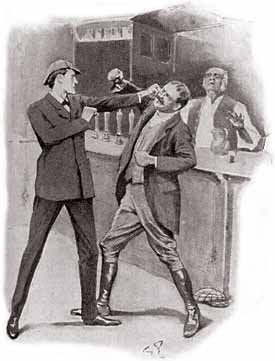
Illustration of Holmes, defending himself against the town bully, The Adventure of the Solitary Cyclist.

Illustration of the climactic scene, The Adventure of the Solitary Cyclist.
The Hound of the Baskervilles. This is perhaps the most famous of all the tales of Holmes. Sir Henry Baskerville is coming from America to claim his inheritance, the Baskerville estate. However, there is a legend of a curse, a big, ghostly hound that attacks and kills those who inherit the estate. It soon becomes apparent that dark forces are at work.
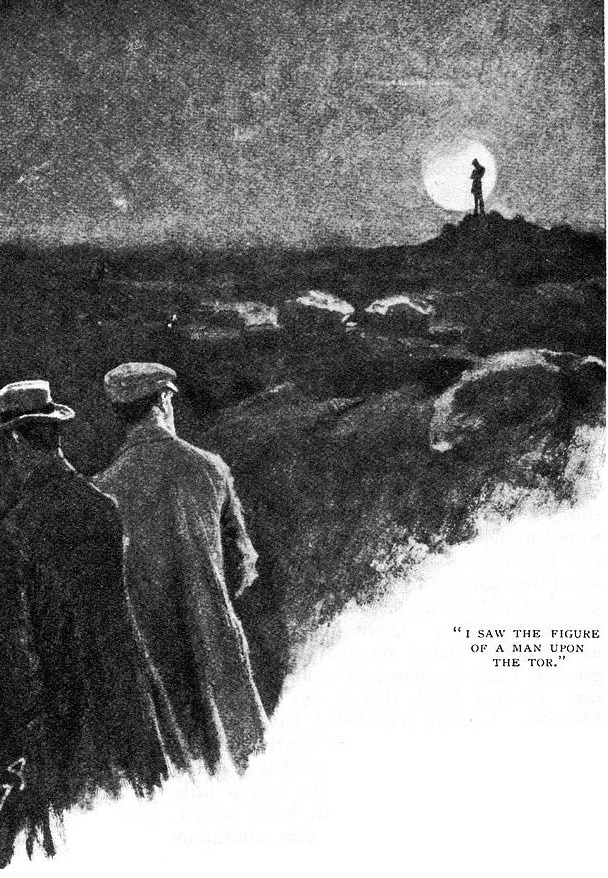
Illustration from The Hound of the Baskervilles.
The legacy
The stories of Mr. Sherlock Holmes have inspired countless stories, from direct Holmes spin-off stories to the modern detective stories well known to us all. In England, there are a few Sherlock Holmes-themed inns.
And even the address of the famous sleuth, 221b Baker Street, is well-known.
When the stories were written, there was no such an address, but later on, there became one, and the fan letters started coming in. Many of these are from people seeking the detective's solution to their problems. The address received so much attention that the owners of the address (a bank) have set up a Sherlock Holmes museum. They also have a secretary to handle the letters.
Not bad for a man who never was.
Great books
Of course, the best reading is the originals. A good deal of these (56 in all) are short stories and don't take too long to read.
Great movies
Sherlock Holmes (1984 – 1994)
This series, with Jeremy Brett as Holmes, is my favorite version. According to Mr. Brett, this was the first time an attempt was made to portray the stories on TV faithfully.
Mr. Holmes
This film portrays Sherlock later in life, long after retiring from work and beginning to suffer memory loss. This is a moving story that puts forth an explanation for why he left off being a detective. I prefer to see him in his prime and solving cases, but it is still a good flick.
I'd love to hear from you. Feel free to email me.
Don't miss out on future posts! Sign up for our email list and like us on Facebook!
Check out more hot topics, go back to Home Page
Comments? You can contact me at mailbox@thehomegrownprofessor.com